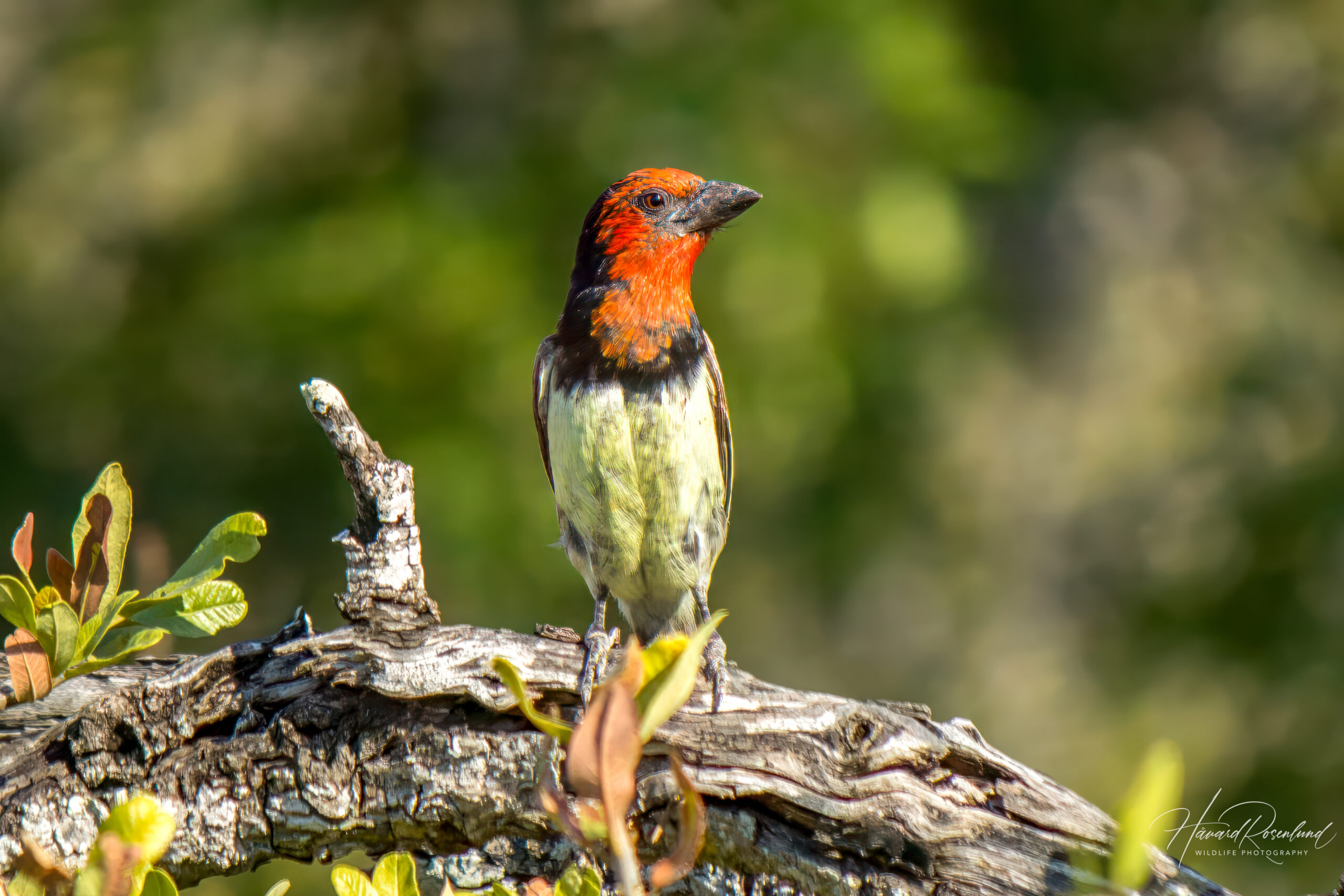Description
The black-collared barbet (Lybius torquatus) is a colorful species of barbet native to sub-Saharan Africa, with a range primarily south of the equator. It boasts a length of approximately 20-25 cm (7.9-9.8 in). It is easily recognizable by its distinctive black collar and vibrant plumage. The back is dark brown and the undersides are white to pale yellow. The red head is often a telltale feature, but some individuals have a yellow head, which is a rare morph. One subspecies, Lybius torquatus zombae, found more centrally within its range, can have a head without either red or yellow, but rather lighter spots and streaks on a black head.
Diet & habitat
The black-collared barbet thrives in a range of environments, including woodlands, savannas, and riverine forests, showing a preference for areas with abundant fruiting trees. It is also found in suburban and urban gardens. Its diet is primarily frugivorous, consisting of various fruits, supplemented by insects (and sometimes even small frogs and lizards), making it an essential seed disperser in its ecosystem. The bird employs a feeding strategy where it often clings to branches while foraging for fruits and insects.
Song
One of the most fascinating aspects of the black-collared barbet is its song, particularly the duet sung by mated pairs. These melodious duets, characterized by a rhythmic and synchronized “too-doodle too doodle” sound, serve as a bonding mechanism between the pair and a territorial signal to other birds. The pair do not sing the notes simultaneously, but when one in the pair sings the first note, the second follows suit with the second note. The coordination in their duet is a remarkable display of avian communication and social interaction.
Here’s and example of the duet:
Nesting
The breeding season of the black-collared barbet varies geographically, typically occurring during the wet season to coincide with fruit abundance. These birds are monogamous, exhibiting strong pair bonds. Nesting behavior includes excavating holes in dead trees or branches, where the female lays 2-4 eggs. Both parents share incubation duties, lasting about 13-15 days. Fledging occurs around 30-40 days post-hatching, with both parents actively involved in feeding and caring for the young.
Status
The black-collared barbet is common and widespread. It benefits from its adaptability to various habitats, including those altered by human activity. The species is listed as least concern on the IUCN Red List.






